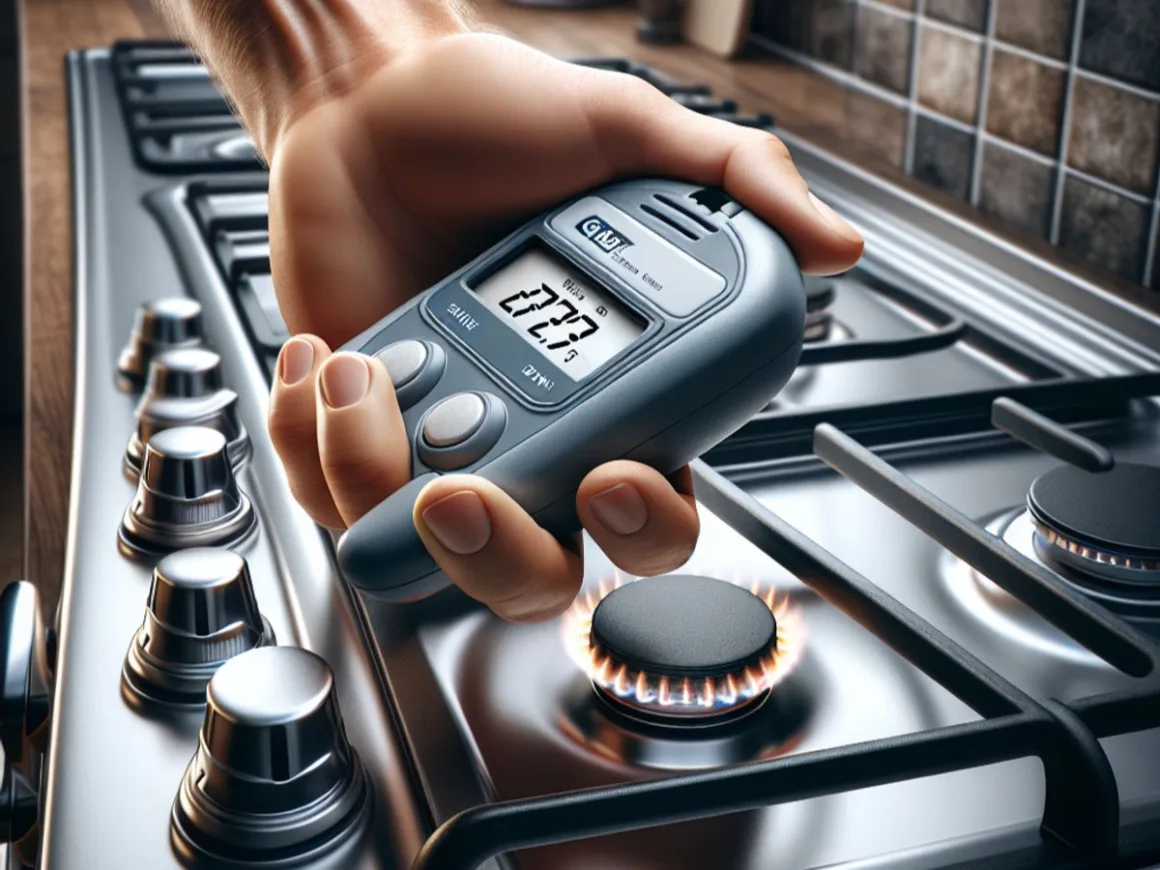Table of Contents Show
Installing appliances can be an exciting and rewarding experience. Whether you’re upgrading your kitchen with a new oven or adding a washer and dryer to your laundry room, it’s important to prioritize safety during the installation process.
By following a few simple tips, you can ensure that your appliance installation goes smoothly and without any accidents. Here are some safety tips to keep you and your home secure:

1. Read the Instructions
Before you begin installing your new appliance, take the time to thoroughly read the manufacturer’s instructions. These instructions will provide you with important safety information specific to your appliance.
Key Components of the Instructions:
- Safety Warnings: Pay special attention to any warnings or cautionary notes. These sections often highlight potential hazards you may encounter during installation.
- Required Tools: The manual will list all necessary tools for the installation. Ensure you have them on hand before starting.
- Step-by-Step Guide: Follow the step-by-step guide closely. Skipping steps can lead to improper installation and potential safety risks.
- Troubleshooting Tips: In case something doesn’t go as planned, the instructions usually include a troubleshooting section to help you resolve common issues.
Benefits of Reading Instructions:
- Prevents Accidents: Understanding each step minimizes the risk of accidents such as electric shocks or injuries from mishandling parts.
- Ensures Proper Installation: Following the manufacturer’s guidelines ensures that your appliance is installed correctly, enhancing its performance and longevity.
- Saves Time and Money: Proper installation reduces the likelihood of mistakes that could lead to costly repairs or replacements.
Pro Tip: Keep the instruction manual accessible even after installation. It can be a valuable resource for future maintenance or troubleshooting.
By taking these steps, you’re not only protecting yourself but also ensuring that your new appliance will function efficiently and safely.
2. Turn Off the Power
Before you start working on any electrical appliance, always turn off the power at the main switchboards or circuit breakers. This step is critical as it will prevent any accidental shocks or electrocution.
Steps to Safely Turn Off the Power:
- Locate the Main Switchboard: Identify where your main switchboard or circuit breaker panel is located. Typically, this is found in a garage, basement, or utility room.
- Identify the Correct Circuit: Check the labels on your circuit breakers to find out which one controls the appliance you’re working on. If circuits aren’t labeled, it’s safer to turn off the main power switch.
- Turn Off Individual Breaker: If you can identify the specific breaker, switch it to the “off” position. This isolates power to that particular appliance.
- Turn Off Main Power (If Unsure): If you’re unsure which breaker controls the appliance, turn off the main power switch to cut off electricity to the entire house.
- Double-Check for Power: Use a voltage tester on the appliance’s outlet or wiring to ensure no electricity is flowing before you begin any work.
Additional Safety Tips:
- Communicate with Household Members: Inform others in your home that you are turning off power and working on electrical systems to prevent accidental reactivation.
- Use Protective Gear: Wear insulated gloves and safety glasses as an extra precaution against electric shocks and sparks.
- Lockout/Tagout Procedures: In professional settings, use lockout/tagout devices to ensure that circuits remain deactivated while work is being done.
Pro Tip: Keep a flashlight handy when turning off the main power, especially if you’re working in dimly lit areas like basements or attics.
By following these steps meticulously, you ensure not only your own safety but also the proper functioning of your electrical appliances post-installation.
3. Use Proper Tools
Using the right tools for the job is crucial for your safety and the successful completion of your project. Before you begin any installation, ensure you have the necessary tools on hand. Here are some essential tools you might need:
- Screwdrivers: Both flat-head and Phillips screwdrivers are indispensable for various tasks, from tightening screws to prying open panels.
- Wrenches: Adjustable wrenches or a set of combination wrenches can help you tackle different sizes of nuts and bolts.
- Pliers: Needle-nose and slip-joint pliers offer versatility for gripping, bending, and cutting wires.
- Measuring Tape: Accurate measurements are critical to ensuring a proper fit for your appliances.
- Level: A level helps ensure that your appliance is aligned correctly, preventing operational issues down the line.
Why Using Proper Tools Matters
Using improper tools can lead to several issues:
- Accidents and Injuries: Using the wrong tool increases the risk of slips, cuts, and other accidents. For instance, a screwdriver that’s too small can slip out of a screw head, causing injury.
- Damage to Appliances: Incorrect tools can strip screws or damage components, leading to costly repairs or replacements.
- Project Delays: Not having the right tools can slow down your progress, making what should be a simple installation take much longer.
Pro Tips
- Inspect Your Tools: Regularly check your tools for wear and tear. A damaged tool can be just as dangerous as an incorrect one.
- Invest in Quality: Higher-quality tools may cost more upfront but will last longer and perform better than cheaper alternatives.
- Organize Your Toolkit: Keep your tools organized and easily accessible. This saves time and reduces frustration during the installation process.
By ensuring you have the proper tools ready before starting any installation, you set yourself up for a safer and more efficient process.
4. Secure Heavy Appliances
When installing a heavy appliance, such as a refrigerator, dishwasher, or washing machine, it’s crucial to ensure it is properly secured to prevent tipping or falling. This not only protects the appliance but also safeguards your home and family.

Steps to Secure Heavy Appliances
Use Safety Straps or Brackets
- Safety Straps: These are adjustable and can be used to secure the appliance to the wall. They are particularly useful for preventing top-heavy appliances from tipping over.
- Brackets: Metal brackets can be attached to both the appliance and the wall or floor, providing a more permanent solution.
Check Stability
- Before securing, make sure the appliance is level. Use a spirit level to check both front-to-back and side-to-side alignment.
- Adjust the feet or base of the appliance if necessary to ensure it sits stable on the floor.
Anchor Points
- Identify strong anchor points on both the appliance and the wall or floor. Avoid attaching straps or brackets to weak structures like drywall without proper reinforcement.
- Use wall studs or solid flooring as anchor points for maximum stability.
Benefits of Securing Heavy Appliances
- Prevents Accidents and Injuries: Securing heavy appliances reduces the risk of them tipping over, which can cause serious injuries, especially in homes with small children or pets.
- Protects Your Investment: Properly secured appliances are less likely to sustain damage from tipping or falling, extending their lifespan.
- Compliance with Safety Standards: Many local building codes and safety guidelines recommend securing heavy appliances as part of home safety protocols.
Pro Tips
- Regular Inspections: Periodically check that straps and brackets remain tight and secure. Over time, they may loosen due to vibrations from normal use.
- Professional Installation: If you’re unsure about how to properly secure an appliance, consider hiring a professional installer who can ensure everything is done correctly and safely.
By following these steps and using appropriate tools and methods, you can ensure that your heavy appliances are safely secured in place, providing peace of mind and enhancing overall home safety.
5. Check for Gas Leaks
If you’re installing a gas appliance, such as a stove or a dryer, it’s crucial to check for gas leaks to ensure safety and prevent potential hazards.

Steps to Check for Gas Leaks:
Before Connecting the Appliance:
- Preparation: Ensure the area is well-ventilated. Open windows and doors to allow any leaked gas to disperse.
- Tools Needed: Have a gas leak detector or a solution of soapy water ready.
Using a Gas Leak Detector:
- Power on the detector and follow the manufacturer’s instructions.
- Move the detector around the gas line connections to check for leaks.
- If an alarm sounds, turn off the gas supply immediately.
Using Soapy Water:
- Mix a small amount of dish soap with water in a spray bottle.
- Spray the soapy solution generously over all connections and joints.
- Observe for any bubbles forming, which indicate a gas leak.
Immediate Actions if a Leak is Detected:
- Turn Off the Gas Supply: Locate the gas shut-off valve and turn it off to stop the flow of gas.
- Contact a Professional: Do not attempt to fix the leak yourself. Call a licensed professional to address and repair the issue safely.
Safety Tips:
- Regular Inspections: Periodically check gas connections even after installation to ensure no leaks have developed over time.
- Use Approved Appliances: Always use appliances that are approved for your type of gas (natural or propane) and have been tested for safety.
Taking these measures will help ensure that your installation is safe and compliant with safety standards, providing peace of mind when using your new gas appliance.
6. Don’t Overload Circuits
When installing multiple appliances, it’s crucial to avoid overloading the electrical circuits. Each appliance has a specific power requirement, and exceeding the capacity of a circuit can lead to overheating and electrical fires. Here are some steps and tips to help you manage your electrical load effectively:
Know Your Circuit Capacity
- Identify Circuit Ratings: Check the amperage rating of each circuit in your home, usually found on your circuit breaker panel.
- Calculate Total Load: Add up the wattage of all appliances that will be on the same circuit.
Understand Power Requirements
- Check Appliance Labels: Each appliance should have a label indicating its wattage or amperage.
- Consider Startup Surge: Some appliances, like refrigerators and air conditioners, require more power when they start up.
Best Practices for Safe Installation
- Distribute Load Evenly: Spread out high-wattage appliances across different circuits.
- Use Dedicated Circuits: For heavy-duty appliances such as ovens or dryers, use dedicated circuits to ensure they don’t share power with other devices.
Signs of an Overloaded Circuit
- Frequent Tripping: If your circuit breaker trips often, it’s a sign of an overload.
- Dimming Lights: Lights dimming when an appliance is turned on can indicate excessive load.
- Burning Smell or Warm Outlets: These are critical warning signs that need immediate attention.
Consult a Professional
If you’re unsure about the electrical capacity of your home, consult a licensed electrician. They can:
- Perform a load calculation to determine if your current wiring supports your needs.
- Upgrade your electrical system if necessary.
Taking these precautions ensures you maintain a safe and efficient electrical system in your home.
7. Test the Appliance
Once the installation is complete, it’s crucial to test the appliance to ensure it’s working properly. Follow these steps:
- Power On: Turn on the appliance and observe its startup sequence.
- Listen for Unusual Noises: Pay attention to any strange or loud noises that could indicate mechanical issues.
- Check for Leaks: For appliances involving water connections, such as dishwashers or washing machines, inspect all hoses and connections for leaks.
- Monitor Performance: Ensure the appliance performs its intended function correctly. For example, verify that an oven heats to the correct temperature or a refrigerator cools appropriately.
- Inspect Electrical Components: Look at the power cord and plug for any signs of overheating or damage.
Troubleshooting
If you notice any issues during testing:
- Unusual Noises: Unplug the appliance immediately and check the installation manual for troubleshooting tips.
- Leaks: Tighten any loose connections or seals and retest.
- Performance Problems: Refer to the user manual for calibration instructions or common troubleshooting steps.
When to Seek Help
If you encounter persistent problems:
“Disconnect the appliance and contact the manufacturer for assistance.”
Manufacturers often provide customer support lines and online resources that can help diagnose and resolve issues.
Conclusion
By following these safety tips, you can ensure a successful and secure appliance installation. Remember:
- If you’re unsure about any step of the installation process, it’s always best to consult a professional.
- Your safety and the safety of your home should always be the top priority.
Taking these precautions helps maintain both the functionality of your new appliance and the safety of your household.
FAQs (Frequently Asked Questions)
Read the instructions carefully before starting the installation to ensure that you understand each step and can minimize the risk of accidents.
Locate the main switchboard and communicate with household members to inform them about the power shutdown. Always follow the necessary steps to safely turn off the power.
Using proper tools is crucial for safety as using improper tools can lead to accidents and injuries. Regularly inspect your tools for wear and tear to ensure they are in good condition.
Use safety straps or brackets, check stability, and identify strong anchor points on both the appliance and the floor. Securing heavy appliances prevents accidents and injuries, so it’s important to regularly inspect straps and brackets.
Before connecting the appliance, ensure proper preparation and use a gas leak detector or soapy water to detect any leaks. If a leak is detected, immediately turn off the gas supply and seek professional help if needed. Regularly inspect gas connections even after installation.
Identify circuit ratings, check appliance labels for power requirements, distribute the load evenly, and be aware of signs of an overloaded circuit such as frequent tripping. If unsure about electrical capacity, consult a professional for assistance.
After installation, test the appliance and troubleshoot any issues that may arise. If persistent problems occur, disconnect the appliance and seek professional help. By following these safety tips, you can ensure a successful and secure appliance installation.










